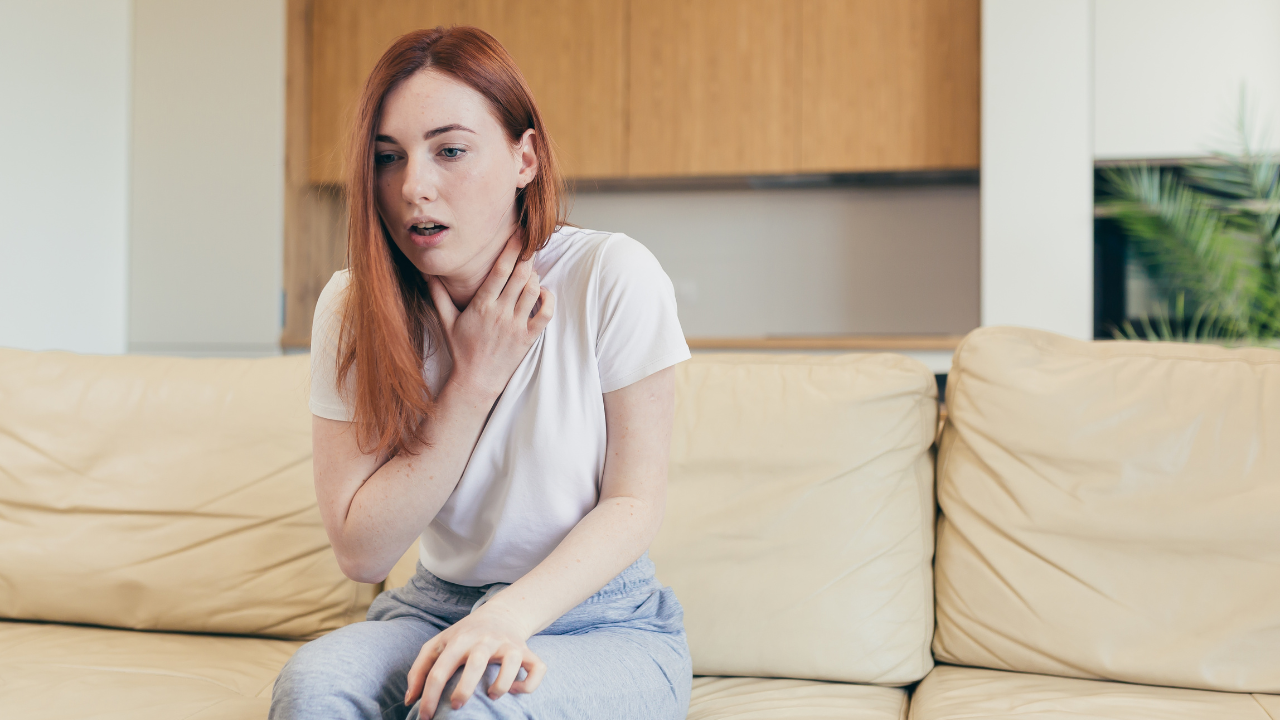
A while ago a patient of mine, Anna, transformed her life by understanding and managing her panic disorder without relying solely on medication.
Her journey is a testament to the power of knowledge, determination, and the right strategies.
Anna is a vibrant professional in her early 30s, living in Copenhagen. Her days are filled with meetings, deadlines, and social events.
However, beneath this bustling exterior, Anna battled with a debilitating condition: panic disorder. The sudden, overwhelming fear would strike without warning, leaving her breathless, her heart pounding, and her thoughts spiraling into chaos.
The unpredictability of these attacks made her feel trapped and out of control.
Understanding the neuroscience behind panic disorder was the first step in Anna’s journey. Our brains are fascinating and complex.
At the heart of panic disorder is the amygdala, a small, almond-shaped region responsible for processing fear. During a panic attack, the amygdala goes into overdrive, triggering the “fight-or-flight” response. It’s like a fire alarm going off without a fire.
This response is crucial for our survival in real danger, but in the case of panic disorder, it’s a false alarm.
The prefrontal cortex, which usually helps regulate emotions and keep the amygdala in check, doesn’t perform as effectively.
Neurotransmitters like serotonin, norepinephrine, and GABA also play a significant role. Imbalances in these chemicals can heighten anxiety and trigger panic attacks.
Anna wanted to regain control of her life without becoming dependent on medication. Together, we explored various non-medication-based strategies that are grounded in neuroscience.
One of the most effective approaches we found was Cognitive-Behavioral Therapy (CBT). This therapy helps identify and challenge the irrational thoughts and beliefs that fuel panic attacks.
By reframing her thoughts, Anna began to see situations more realistically and less fearfully.
We also tried exposure therapy. It might sound intimidating, but it involves gradually facing the sensations and situations that trigger panic attacks in a controlled environment.
This method helped Anna build tolerance and reduce her fear response. Imagine standing on a beach, feeling the waves wash over your feet, slowly getting used to the sensation.
That’s how exposure therapy works – it helps you get used to the “waves” of panic until they no longer knock you off your feet.
Mindfulness and meditation became daily practices for Anna.
She learned to stay present, focusing on her breath and grounding herself in the moment.
One day, during a particularly stressful meeting, she felt the familiar tightness in her chest. Instead of panicking, she closed her eyes, took a deep breath, and imagined herself in a peaceful forest, hearing the rustling leaves and feeling the cool breeze.
Within moments, she felt calmer and more in control.
Lifestyle modifications also played a crucial role. R
egular exercise became a non-negotiable part of Anna’s routine.
She started with evening jogs along the Copenhagen waterfront, feeling the fresh air fill her lungs and the rhythm of her steps soothing her mind.
Exercise releases endorphins, the body’s natural stress relievers, reducing overall anxiety levels.
A balanced diet helped stabilize her blood sugar levels and prevent mood swings.
She discovered the joy of cooking, experimenting with colorful vegetables, aromatic herbs, and wholesome grains. This not only nourished her body but also became a therapeutic activity.
Sleep hygiene was another game-changer.
We established a calming bedtime routine that included reading, gentle stretches, and avoiding screens before bed. Consistent, quality sleep helped Anna feel more rested and resilient.
Biofeedback and neurofeedback were also part of our strategy.
These techniques provided Anna with real-time data on her physiological responses, helping her understand and gain control over her body’s reactions.
It was like having a mirror that reflected not just her external appearance but her internal state, allowing her to make adjustments and find balance.
Support groups and self-help resources provided Anna with a sense of community and shared understanding.
She connected with others who faced similar challenges, exchanging tips and offering mutual encouragement. Knowing she wasn’t alone in her struggle made a significant difference.
Today, Anna manages her panic disorder with confidence and resilience.
She recognizes the early signs of a panic attack and uses deep breathing and grounding techniques to stay calm.
She maintains a regular exercise routine, eats a balanced diet, and prioritizes sleep.
Her journey is a powerful reminder that while medication can be a valuable tool, there are also effective non-medication strategies to control panic attacks.
If you’re struggling with panic disorder, know that you’re not alone.
Understanding the neuroscience behind it and exploring various non-medication-based strategies can help you regain control and live a fulfilling life.
Remember, it’s about finding what works best for you and being patient with yourself along the way.
Take care and stay strong,
Florina
Get My Blog Posts Right in Your Inbox Every Week
Make your mental health a priority. Receive tips and strategies for living well – mentally, physically, and emotionally – every week.
Get My Free Guide: 7 Cheap, Simple Strategies for Boosting Your Brain Performance
Better focus – clearer memory – faster cognition – more mental clarity – improved intellect…
Your brain is capable of beautiful things. If you don’t think you’re getting the most out of your cranial supercomputer, you can reap the benefits of these 7 simple strategies for the low, low price of “free.”